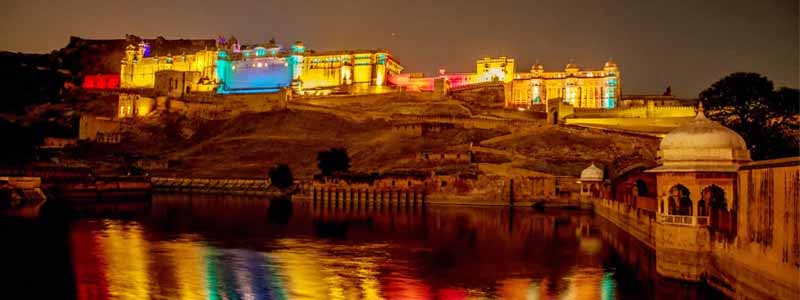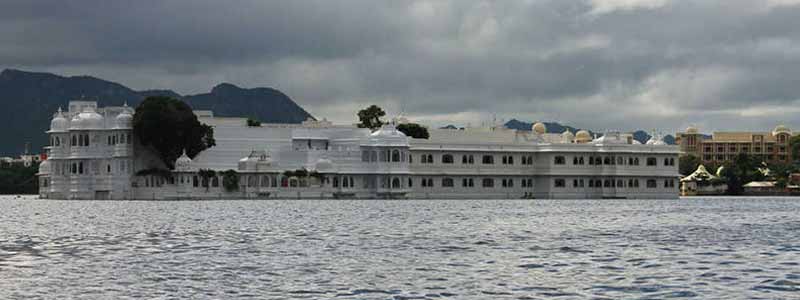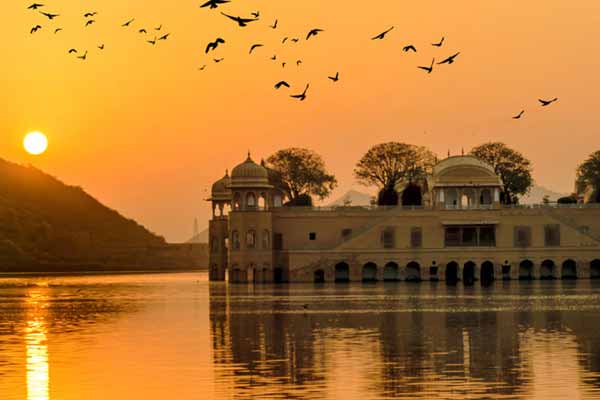Best Weekend Getaways in Rajasthan, known for its rich heritage and vibrant culture, offers numerous captivating weekend getaways. Jaipur, the Pink City, boasts majestic forts like Amer Fort and City Palace, alongside the Hawa Mahal. Pushkar, a quaint town, presents the sacred Pushkar Lake and Brahma Temple.
Udaipur, the City of Lakes, allures with its serene Lake Pichola, City Palace, and the Jag Mandir Palace. Jodhpur, the Blue City, showcases the imposing Mehrangarh Fort and the vibrant local markets within the old city.
For a desert retreat, Jaisalmer stands out, with its golden sand dunes, camel safaris, and the magnificent Jaisalmer Fort. Additionally, Ranthambore National Park, known for its tiger population, offers a thrilling wildlife experience.
Each of these destinations encapsulates the essence of Rajasthan, offering historical marvels, cultural richness, and natural beauty, making for delightful weekend getaways filled with heritage and adventure.

Jaipur
Jaipur, known as the “Pink City,” offers diverse weekend getaways to enrich your travel experience. Begin your exploration with the majestic Amer Fort, a stunning architectural marvel steeped in history. Nearby, Nahargarh Fort provides panoramic views of the cityscape. For a cultural immersion, visit the City Palace and Hawa Mahal, showcasing intricate craftsmanship.
Delve into Jaipur’s vibrant markets for exquisite handicrafts at Johari Bazaar or Bapu Bazaar, perfect for souvenir shopping. Savor local Rajasthani cuisine at Chokhi Dhani, an ethnic village resort offering traditional food and entertainment.
Nature enthusiasts can explore the serene landscapes of Jal Mahal, a palace amidst Man Sagar Lake, or venture to Sisodia Rani Garden for its tranquil ambiance. Witness the astronomical brilliance at Jantar Mantar, an ancient astronomical observatory.
Finally, unwind at luxurious heritage hotels like Rambagh Palace or Samode Palace, experiencing Rajasthani hospitality. With its blend of history, culture, and natural beauty, Jaipur promises an unforgettable weekend getaway.

Udaipur
Nestled in Rajasthan’s regal embrace, Udaipur offers enchanting weekend getaways. Start your sojourn by exploring the majestic City Palace, a splendid amalgamation of Rajasthani and Mughal architecture, showcasing ornate courtyards, corridors, and a breathtaking view of Lake Pichola. A boat ride on the serene lake, encompassing Jag Mandir and Jag Niwas (Lake Palace), offers a surreal experience.
Visit the iconic Jagdish Temple, a fine example of Indo-Aryan architecture, and delve into Udaipur’s rich cultural heritage. The vintage car museum, showcasing classic automobiles, fascinates automobile enthusiasts.
Experience tranquility at Saheliyon ki Bari, known for its lush gardens, fountains, and marble artistry. For adventure seekers, a trek to the Monsoon Palace offers panoramic views of the city and its picturesque surroundings.
Indulge in delectable Rajasthani cuisine at local eateries. Udaipur’s vibrant markets offer an array of handicrafts, textiles, and jewelry for souvenir shopping.
With its royal charm and serene vistas, Udaipur promises a rejuvenating weekend getaway.
Jodhpur
Jodhpur, the “Blue City” of Rajasthan, offers captivating weekend getaways that showcase the region’s rich culture and history. Just a short drive away, explore the mystical allure of Osian, an ancient town famous for its intricately designed temples and camel safaris amidst the Thar Desert.
For a serene escape, head to the Bishnoi Villages, where the vibrant community proudly preserves nature and wildlife. Witness traditional handicrafts, interact with locals, and admire the unique landscape dotted with Khejri trees.
To experience royalty, visit the majestic Mehrangarh Fort and Jaswant Thada mausoleum, marveling at their architectural brilliance and panoramic views of the city.
For a luxurious retreat, indulge in the opulence of heritage hotels like Umaid Bhawan Palace, offering regal hospitality and splendid experiences.
Complete your weekend by savoring authentic Rajasthani cuisine at local eateries, exploring bustling markets for souvenirs, and immersing yourself in the city’s timeless charm. Jodhpur’s nearby escapes promise a delightful blend of history, nature, and culture within a short trip.
Pushkar
Pushkar, a serene and spiritual town in Rajasthan, offers a perfect weekend getaway filled with cultural richness and tranquility. Begin your exploration by visiting the sacred Pushkar Lake, where devotees take ritualistic dips. The Brahma Temple, one of the few temples in the world dedicated to Lord Brahma, is a must-visit for its architectural splendor and religious significance.
Experience the vibrant colors of Pushkar at the bustling local markets. Indulge in shopping for exquisite handicrafts, Rajasthani attire, and souvenirs. For a serene escape, explore the nearby Savitri Temple, situated atop a hill, offering breathtaking panoramic views of the town.
Engage in camel safaris or hot air balloon rides to witness Pushkar’s beauty from a different perspective. Don’t miss savoring the delicious local cuisine, especially the authentic Rajasthani thali.
With its blend of spirituality, culture, and natural beauty, Pushkar makes for an enriching and rejuvenating weekend getaway.
Ranthambore
Ranthambore, a picturesque destination known for its majestic tigers and rich heritage, offers splendid weekend getaways. Visitors can explore the Ranthambore National Park, a haven for wildlife enthusiasts, offering thrilling safaris to witness diverse flora and fauna, including the famed Bengal tigers. Additionally, the 10th-century Ranthambore Fort stands tall amidst lush surroundings, providing a glimpse into the region’s historical significance and panoramic views of the park.
For a relaxed weekend, visitors can opt for luxury resorts and hotels offering a blend of comfort and nature’s beauty. These accommodations often organize nature walks, birdwatching tours, and cultural performances, allowing guests to immerse themselves in the local culture.
Adventure seekers can also indulge in trekking expeditions to the nearby hills or explore the Surwal Lake, home to various avian species.
Overall, Ranthambore promises an exciting weekend getaway, combining wildlife encounters, historical exploration, and serene natural beauty within its captivating surroundings.
Mount Abu
Nestled in the Aravalli Range of Rajasthan, Mount Abu offers an ideal weekend escape with its serene landscapes and cultural richness. The Dilwara Jain Temples, renowned for their intricate marble carvings, stand as a testament to the town’s architectural brilliance. Nakki Lake, a picturesque spot surrounded by hills, offers boating and stunning sunset views.
For nature enthusiasts, Guru Shikhar, the highest peak in the Aravalli Range, offers panoramic vistas and a tranquil atmosphere. Additionally, the Mount Abu Wildlife Sanctuary is a haven for biodiversity, housing various species of flora and fauna.
The town also boasts vibrant local markets offering Rajasthani handicrafts, souvenirs, and delicious street food. To experience Mount Abu’s spirituality, a visit to the peaceful Peace Park or the spiritual retreat of Brahma Kumaris World Spiritual University can be enlightening.
Whether seeking tranquility, adventure, or cultural exploration, Mount Abu’s charm and diversity make it an ideal weekend destination for a refreshing getaway.
Bundi
Nestled in Rajasthan, Bundi offers an enchanting blend of history and natural beauty, making it an ideal weekend getaway. The city boasts magnificent forts, palaces, and serene lakes, promising an immersive experience in its rich heritage.
Begin your journey at the imposing Taragarh Fort, known for its stunning architecture and panoramic views of the city. Explore the intricately designed Bundi Palace, adorned with beautiful frescoes and murals depicting tales of valor and culture.
The stepwell marvels of Bundi, such as the intricately carved Raniji ki Baori and Nagar Sagar Kund, showcase the city’s architectural prowess. Wander through the colorful streets adorned with blue houses, soaking in the local culture and craftsmanship.
For nature enthusiasts, a visit to Jait Sagar Lake or Nawal Sagar Lake is a must, offering tranquility amidst picturesque surroundings.
With its captivating history and scenic landscapes, Bundi encapsulates the essence of Rajasthan, making it an unforgettable weekend destination for history buffs and nature lovers alike.
Jaisalmer
Jaisalmer, Rajasthan, offers captivating weekend getaways amidst its golden sands and rich heritage. One such destination is the Sam Sand Dunes, renowned for thrilling camel safaris and mesmerizing sunsets over the expansive desert. Visitors can immerse themselves in the rustic charm of desert camps, enjoying folk music, dance performances, and indulging in traditional Rajasthani cuisine.
Another must-visit is the Jaisalmer Fort, a UNESCO World Heritage Site showcasing magnificent Rajputana architecture. Exploring its narrow lanes filled with vibrant markets, ancient havelis (mansions), and ornate Jain temples offers a glimpse into the city’s historical legacy.
For a serene retreat, the Gadisar Lake is ideal. Surrounded by artistically carved temples and shrines, this picturesque spot offers boat rides and serene moments amidst nature.
Adventure enthusiasts can explore Kuldhara, an abandoned village with eerie yet fascinating ruins, known for its mysterious history and ghostly tales.
These weekend getaways in Jaisalmer promise a blend of history, culture, and adventure, creating unforgettable experiences for travelers.
Bikaner
Bikaner, located in the desert state of Rajasthan, offers a delightful array of weekend getaways that encapsulate its rich heritage and cultural charm.
One of the must-visit spots is the Junagarh Fort, an architectural marvel exhibiting a blend of Rajputana, Gujarati, and Mughal styles. The Lalgarh Palace, with its stunning architecture and museums, is another fascinating destination portraying the opulence of the royal era.
For a unique experience, head to the National Research Centre on Camel, where you can learn about these desert creatures and even enjoy a camel safari. The Karni Mata Temple, known for its population of friendly rats, is a fascinating yet unconventional site.
Additionally, a visit to the Gajner Wildlife Sanctuary offers a tranquil retreat amidst nature, perfect for wildlife enthusiasts and birdwatchers.
With its historical monuments, cultural richness, and unique attractions, Bikaner offers a fulfilling weekend escape for history buffs and nature lovers alike Best Weekend Getaways in Rajasthan Best Weekend Getaways in Rajasthan.
